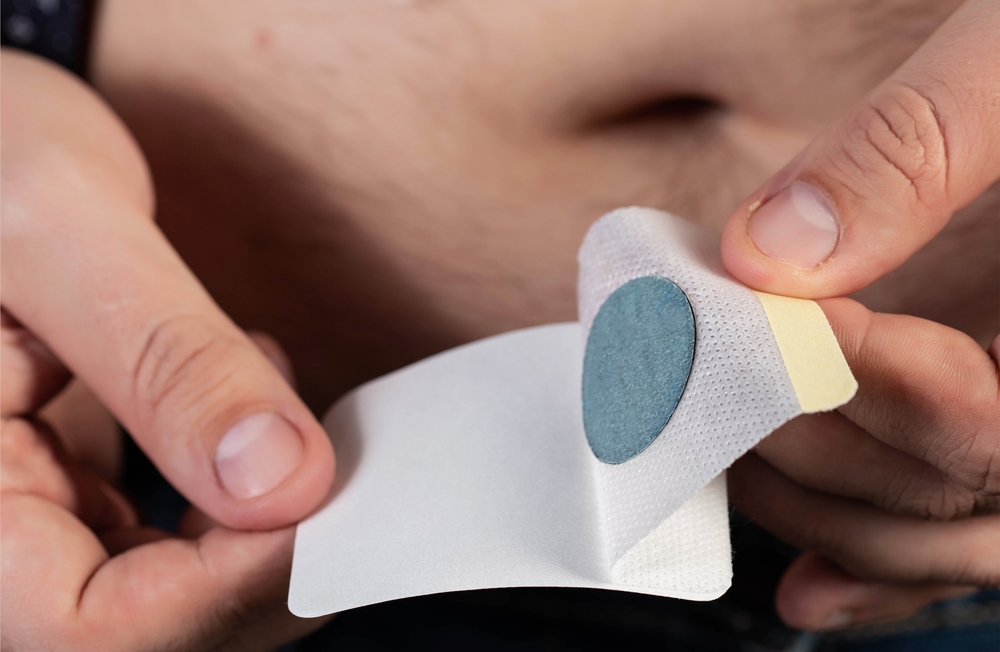A Glimpse Into the Future: Ultrasound Patches

Ultrasound is generally a noninvasive procedure. In most cases, probes are applied externally, and even contrast-enhanced ultrasound — which requires an injection of microbubbles — is relatively painless. Still, there’s a constant push to make procedures simpler and easier on patients, which is why scientists at the Massachusetts Institute of Technology (MIT) set out to create and test a new approach to ultrasound. And it’s as effortless as putting on a Band-Aid.
Moore’s Law and digital healthcare
Ultrasound technology is getting smaller all the time. Today, clinicians, hospitals, emergency rooms, and even first responders rely on point-of-care ultrasound (PoCUS) to generate incredibly clear diagnostic images that can be shared at the touch of a button. PoCUS technology is mobile, easy to use, and even limits patient exposure to radiation — and it’s helping expedite emergency diagnosis and critical care.
It’s also an example of Moore’s Law in action. Moore’s Law says that the number of transistors in a dense integrated circuit doubles about every two years. In layman’s terms, this roughly means that form factors will get smaller and smaller, while the technology gets more and more powerful.
The technical advancements described by Moore’s Law offer incredible potential for medical devices. PoCUS devices have been around for years, but with the recent surge in innovation, they can now provide for high-quality image capture at rapid speeds. Today’s ultrasound technology can fit on a chip, and affordable, go-anywhere PoCUS tech can connect directly to a user-friendly app, democratizing healthcare in a brand-new dimension.
A breakthrough from MIT?
PoCUS devices are getting smaller, but a recent MIT experiment could change things in a big way. MIT engineers have developed a wearable device that sticks to the skin and delivers ultrasound imaging of the condition of organs and tissue for up to 48 hours. Researchers posit that this stamp-sized ultrasound system may one day be as accessible as adhesive bandages — and as easy to use.
MIT designers envision several patches attached to the body, communicating via smartphone, with AI algorithms analyzing the images in real-time. Conceptually, it’s a new era of wearable imaging that patients can take home from the doctor’s office or pick up at the local pharmacy.
While the design remains theoretical, it represents a big step forward and provides a glimpse of ultrasound’s future potential. There’s plenty of research and refinement to be done before wearable ultrasound can produce the necessary quality for diagnostic imaging, but if Moore’s Law is any indication, medical technology is on the cusp of another revolution in ultrasound capability.
 A new, dynamic dimension of internal imaging
A new, dynamic dimension of internal imaging
One of the primary benefits of wearable ultrasound is the way it conforms to the body. By pairing a stretchy adhesive layer with a rigid collection of probes, MIT researchers have created an ultrasound sticker that delivers higher-quality images for longer periods. As the stickers conform to the skin, they maintain the relative location of probes to produce clearer, more precise images.
The MIT team recruited healthy volunteers to put their stickers through a variety of test. With the ultrasound patches attached to their skin, research participants performed a variety of everyday activities, including sitting, standing, walking, jogging, and biking, in the lab. Imaging integrity wasn’t noticeably affected by movement, and the tests also provided insight into how the body’s internal systems adapt to different stimuli.
From the images generated by their stickers, the MIT team could observe details of internal organ systems and changes in blood vessel diameter during activity. The stickers were even able to capture patterns in underlying muscles as subjects lifted weights, showing temporary microdamage as muscle fibers were put to the test. Researchers believe the technology may eventually be able to capture the moment just prior to overuse during a workout — all thanks to wearable ultrasound.
The future of ultrasound
The MIT team is also working to implement AI algorithms that can interpret and diagnose the images their ultrasound stickers collect. They envision a time when stickers could be purchased by patients to monitor everything from the condition of internal organs to tumor progression and prenatal fetal development. It’s a breakthrough set to democratize medical imaging and give patients more control over their care via safe, simple, and affordable diagnostic imaging.
PoCUS has already shown the power of ultrasound technology in a compact device. With the successful development of ultrasound patches, the future of diagnostic imaging may soon be as simple as a sticker.

 A new, dynamic dimension of internal imaging
A new, dynamic dimension of internal imaging